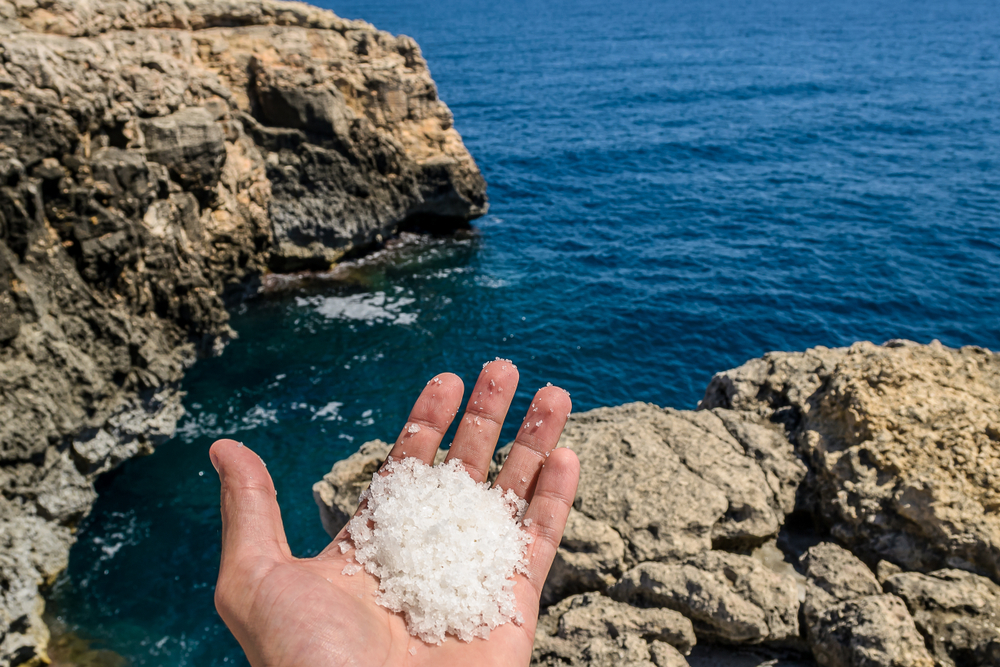weatherontheair.com – The vast expanse of the ocean covers approximately 71% of the Earth’s surface, harboring a complex and dynamic chemical system that is crucial for life on our planet. This intricate network of chemical processes, often referred to as the ocean’s alchemy, plays a pivotal role in regulating the Earth’s climate, supporting marine ecosystems, and influencing human activities. In this article, we will delve into the fascinating world of marine chemistry, exploring the key components and processes that define the ocean’s chemical landscape.
The Salty Sea: Dissecting the Major Salts
The ocean’s salinity is a defining characteristic, with the average salt content being about 35 grams per kilogram of seawater. The major salts in seawater include sodium chloride (NaCl), magnesium chloride (MgCl2), magnesium sulfate (MgSO4), calcium chloride (CaCl2), and potassium chloride (KCl). These salts are derived from the weathering of rocks on land, volcanic activity, and the dissolution of minerals. The concentration of these salts affects the density of seawater, influencing ocean currents and the distribution of marine life.
The Role of Dissolved Gases: Oxygen and Carbon Dioxide
Oxygen is essential for marine organisms, entering the ocean through the atmosphere and from photosynthetic organisms like phytoplankton. The solubility of oxygen in seawater is influenced by temperature, salinity, and pressure, with colder and less saline waters holding more oxygen. Carbon dioxide is another critical gas, absorbed by the ocean from the atmosphere and through biological processes. The ocean acts as a carbon sink, regulating the global climate by sequestering a significant portion of anthropogenic carbon emissions.
pH Balance and Ocean Acidification
The ocean’s pH is a measure of its acidity or alkalinity, with an average value of around 8.1, making it slightly alkaline. This pH balance is maintained through the buffering capacity of seawater, which involves the carbonate and bicarbonate ions. However, the increasing concentration of carbon dioxide in the atmosphere is leading to ocean acidification, a process that reduces the pH of seawater. Ocean acidification poses a threat to marine life, particularly organisms with calcium carbonate shells or skeletons, such as corals and mollusks.
Nutrient Cycling: The Engine of Marine Productivity
Nutrients such as nitrogen, phosphorus, and silicon are vital for the growth of marine plants and phytoplankton, forming the base of the marine food web. The cycling of these nutrients is driven by a combination of physical, chemical, and biological processes. Upwelling, the process by which nutrient-rich deep waters are brought to the surface, is a key mechanism that fuels high productivity in certain coastal regions. The nitrogen cycle, involving the conversion of nitrogen gas to biologically available forms, is another critical process that supports marine life.
The Impact of Human Activities on Marine Chemistry
Human activities, including pollution, overfishing, and climate change, have significant impacts on the chemistry of the ocean. Pollutants such as heavy metals, oils, and synthetic chemicals can disrupt marine ecosystems and bioaccumulate in marine organisms. Overfishing can alter the balance of marine food webs, affecting nutrient cycling and productivity. Climate change, driven by greenhouse gas emissions, leads to warming oceans, melting ice caps, and rising sea levels, all of which have profound effects on marine chemistry and ecosystems.
Conclusion
The ocean’s alchemy is a testament to the intricate and interconnected nature of Earth’s chemical systems. Understanding the chemistry of the sea is not only crucial for marine science but also for addressing global challenges such as climate change and the conservation of marine life. As we continue to explore and study the ocean, we must also strive to protect this vital resource for the benefit of all life on Earth.
